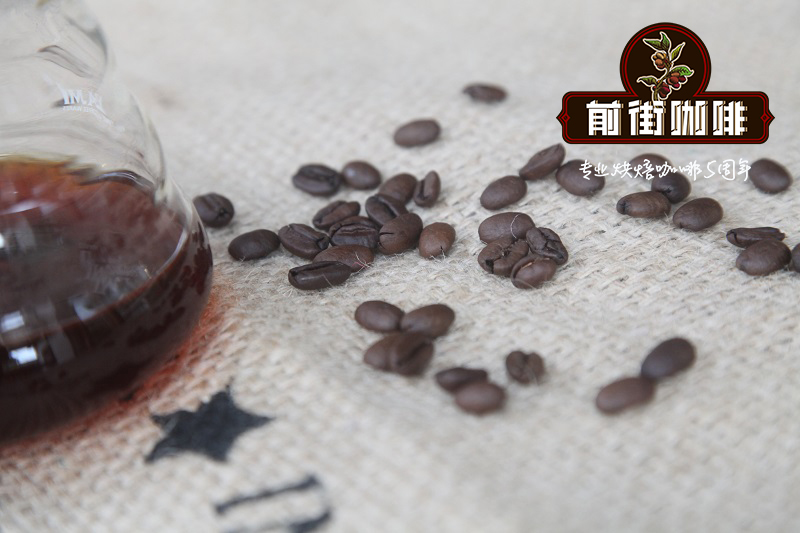Marago Rippi Coffee, which is 3 times larger than ordinary coffee beans. Introduction to Marrago Rippi Pigs

Professional coffee knowledge exchange more coffee bean information please follow the coffee workshop (Wechat official account cafe_style)
Sometimes I see that the body of coffee beans is very big, is this a variation? No ~ there are three kinds of elephant beans in coffee beans, and Marragozipi is one of them! The size of the coffee beans in Marrago Rippi is three times the size of ordinary coffee beans.
Good or good flavor quality in Central America. But it is easy to develop leaf rust. The yield is very low, with large leaves and large internodes.
Marago Rippi is a natural variant of Tibica found near the city of Marago Rippi in Brazil in 1870. Beans, Internode spacing and leaves are particularly large due to a dominant gene mutation. Malagoripi is one of the parents of its variety Pacamara.
There are many kinds of coffee in the world, whether Arabica or Robusta, their coffee beans are not much different in size, but giant coffee beans (Elephant bean) is an exception, it is three times or more than other coffee beans.
The taxonomic name of this coffee bean is Maragogype, because the coffee bean is very large, commonly known as elephant bean. Elephant beans come from Maragoripi County in the Brazilian state of Bahia, where giant coffee beans were first established in 1870 as a hybrid of the Arabica species.
After the status was determined in taxonomy, elephant beans were cultivated rapidly and brought better economic benefits. The giant coffee was grown in the English town of Kew in 1883 and is said to be growing well. France was the early market for the coffee beans, while in Germany before World War I, giant coffee beans were so high that they were the only kind of coffee drunk by the royal family.
Previously, only Guatemala (Guatemala), Mexico (Mexico), Nicaragua (Nicaragua), Honduras (Honduras), El Salvador (El Salvador), Brazil (Brazil) and Zaire (Zaire) produced Marago Rippe Coffee, but at the beginning it was also grown in coffee production areas around the world. Because of the fertile volcanic landscape, the best elephant beans grow only in Mexico and Guatemala, and there are fewer and fewer high-quality Marrago skin coffees.
In fact, global coffee production has fallen from its peak in the first two decades of this century. This means that many people find it admirable to have a cup of coffee made with Mexican or Guatemalan coffee powder. Moderate taste, no bitterness, slightly sour, balanced sweet and sour orange fruit, rich berry aroma, sweet and warm texture.
Flavor: the flavor is sweet and mellow, with sweet chocolate and slightly fruity orange flavor.
END
Important Notice :
前街咖啡 FrontStreet Coffee has moved to new addredd:
FrontStreet Coffee Address: 315,Donghua East Road,GuangZhou
Tel:020 38364473
- Prev

How to judge whether a cup of coffee is good or bad? What is the measure?
Professional coffee knowledge exchange more coffee bean information Please pay attention to the coffee workshop (Wechat official account cafe_style) insufficient extraction of coffee means that the water brings out not enough coffee powder substances, coffee powder there are many residual substances, can increase the flavor of this cup of inadequately extracted coffee. Imagine a cup of espresso with too short extraction time, that is, fine semantic concentrated ristr.
- Next

What effect does different packaging have on raw beans?
Professional coffee knowledge exchange More coffee bean information Please pay attention to coffee workshop (Weixin Official Accounts cafe_style) There is a lot of information on the label of coffee beans. In addition to the obvious information, such as altitude and treatment methods, there are some common English abbreviations, sometimes a bit of thought. GP refers to a packaging method for raw beans, GrainPro, special packaging for grain. coffee green
Related
- Beginners will see the "Coffee pull flower" guide!
- What is the difference between ice blog purified milk and ordinary milk coffee?
- Why is the Philippines the largest producer of crops in Liberia?
- For coffee extraction, should the fine powder be retained?
- How does extracted espresso fill pressed powder? How much strength does it take to press the powder?
- How to make jasmine cold extract coffee? Is the jasmine + latte good?
- Will this little toy really make the coffee taste better? How does Lily Drip affect coffee extraction?
- Will the action of slapping the filter cup also affect coffee extraction?
- What's the difference between powder-to-water ratio and powder-to-liquid ratio?
- What is the Ethiopian local species? What does it have to do with Heirloom native species?

